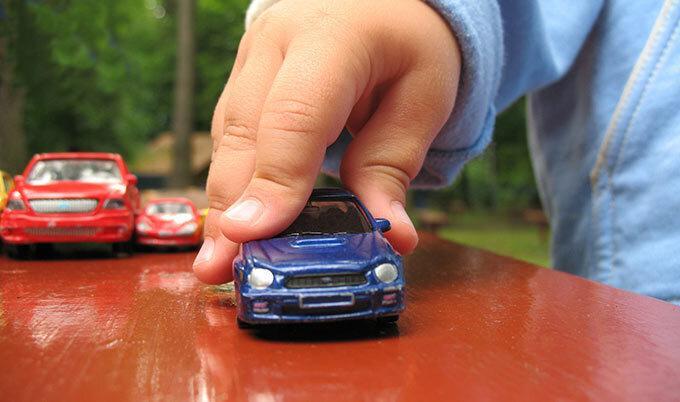Obtaining basic automobile insurance coverage is simple, but first, you must understand what basic coverage entails. Most likely, you want to purchase a cheap vehicle insurance coverage and be done with it as soon as possible. When it comes to vehicle insurance, the common attitude is "take my money, give me proof of insurance, and leave me alone." Not everyone is familiar with all of the vehicle insurance lingo. In reality, many people are probably unaware of the sort of coverage they now have on their vehicles. Basic vehicle insurance coverage is typically the minimum required by the state. Depending on where you live, you should consider purchasing a policy that includes personal liability coverage, PIP coverage, and uninsured motorist coverage.
Personal Liability Insurance
Personal liability coverage is the cornerstone of all vehicle insurance plans. That is what safeguards you if you harm someone or damage their automobile or property in a car accident. Each state determines the minimum coverage necessary. However, many insurance brokers believe that the state's minimum liability levels are insufficient. The preferred liability limits are 100/300/100.How Does It Work?
The coverage you choose is the maximum amount that can be paid out. Many consumers are surprised to learn that liability coverage does not apply to them. The primary purpose of liability coverage is to protect the insured from potentially costly litigation resulting from a vehicle accident. A supplementary advantage would be to safeguard other drivers from the car and health-related costs. A typical personal liability vehicle insurance policy has three coverage limitations. They are frequently stated as three numbers separated by slashes, with no more information detailing the coverage.Example Liability Limits 100,000/300,000/100,000 or 100/300/100
- Bodily Injury Liability Limit Per Person: The first limit given in the example is $100,000 for bodily injury liability per person. The monetary amount is the most your insurance will pay out to a single individual injured in an accident caused by you.
- Bodily Injury Liability Limit Per Accident: The second limit given in the example is $300,000 for bodily injury liability per accident. This is the most money that may be paid out per accident. More than $100,000 would have to be paid out if many persons were hurt. Multiple major injuries might quickly exhaust a modest limit. This is a major reason why state minimum vehicle insurance limits are so low.
- Property Damage Liability: The third $100,000 limit is for property damage. It covers protection for any inanimate item owned by someone other than you. Driving into a home, hitting and damaging a car, or breaking a guardrail are all instances of accidents that might cause property damage. As you may expect, the expense of property damage can rapidly pile up. It is critical to have adequate
Uninsured or Underinsured Motorist
In certain states, uninsured motorist insurance is required. Depending on where you reside, a minimum amount will be necessary. Many insurance brokers may advise you to match your personal liability and uninsured motorist limits. Uninsured motorist coverage is available if an uninsured driver destroys your car or injures someone in your vehicle. Underinsured motorist coverage kicks in if your damages exceed the other driver's limits and you have greater limits.Example of Uninsured Motorist 100,000/300,000 or 100/300
Similar to personal responsibility, the maximum permitted for a single individual is $100,000, while the maximum allowed for an accident is $300,000. Uninsured motorist coverage can be quite useful. Taking someone to court and suing them for damages because they lacked vehicle insurance can be a time-consuming process. Remember that many people who drive without automobile insurance do not have the financial resources to pay for thousands of dollars in damages.PIP and Medical Coverage
PIP is an abbreviation for "personal injury protection." It is comparable to medical insurance but offers a bit more protection. The main difference between PIP and medical coverage is that it covers expenditures associated with injuries, such as lost wages and rehabilitation costs. Medical coverage is a crucial aspect of automobile insurance, and even if it is not required, you should consider getting it. These policies compensate for injuries sustained by the insured regardless of whether or not they were at fault in the accident. PIP and medical payments cover your own injuries, as opposed to Bodily Injury Liability, which only covers someone else you damage.Other Types of Coverage
- Comprehensive Coverage: The most common comprehensive (or "comp") claims are windshield damage, fire, theft, vandalism, flood, and deer. Any physical damage claim that is not the result of a collision is covered by comp.
- Collision Coverage: Collision coverage is well-known for covering fender benders, but it also covers the cost of repair or replacement (up to a limit) of a car damaged in an accident that was your fault or with an animal or an accident that involved no one else, such as skidding into a guard rail).
- Roadside Assistance: Need a tow or assistance with a lockout? Many insured drivers benefit from roadside assistance.
- Car Rental: It pays a certain amount toward the cost of renting a car while your vehicle is being repaired as a result of a covered loss.


